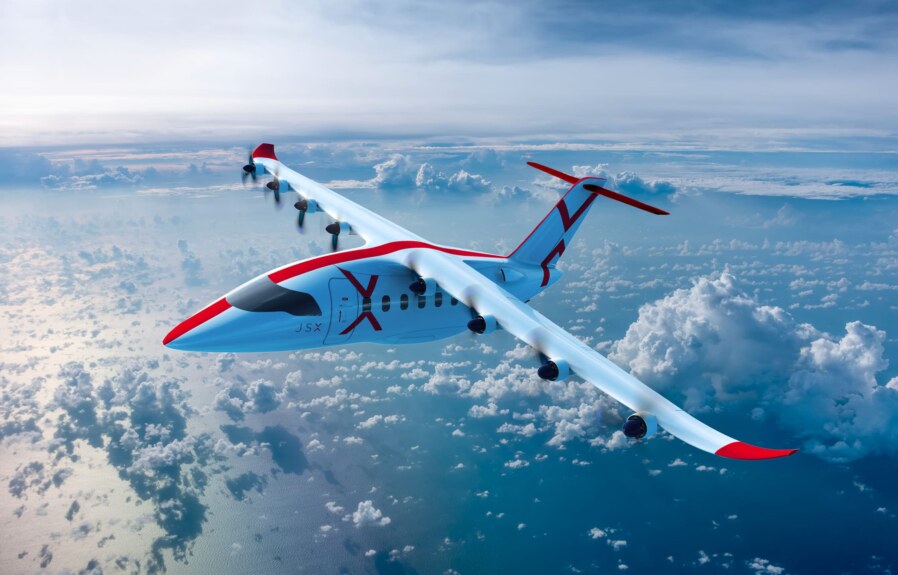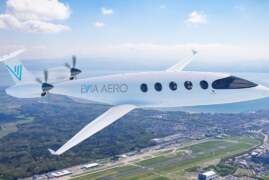The aerospace industry is constantly evolving, driven by technological advancements, changing passenger demands, and a growing focus on sustainability. From the rise of electric aircraft to the increasing importance of environmental considerations, the trends shaping the future of air travel are diverse and transformative. Here’s a look at some of the most significant trends:
1. Electric and Hybrid Aircraft
Electric and hybrid aircraft technologies are gaining momentum as the industry seeks to reduce carbon emissions and improve fuel efficiency. While fully electric commercial flights are still a few years away, hybrid propulsion systems are already being tested for short-haul flights.
Example: The Alice electric aircraft developed by Israel’s Aviation startup, Eviation, aims to be the first all-electric passenger plane with a range of up to 650 miles, ideal for regional flights.
2. Sustainability in Aerospace
Sustainability has become a major focus for the aerospace industry. Companies are increasingly exploring ways to reduce the environmental impact of air travel, including the development of more fuel-efficient aircraft and the use of sustainable aviation fuels (SAFs).
Example: In 2021, United Airlines became the first major U.S. airline to operate a passenger flight using 100% SAF, showcasing their commitment to reducing their carbon footprint.
3. Urban Air Mobility (UAM)
Urban Air Mobility (UAM) refers to the use of small, electric aircraft for urban transportation, including air taxis and cargo delivery services. UAM has the potential to revolutionize urban mobility by reducing traffic congestion and providing faster transport options.
Example: Companies like Joby Aviation are developing electric air taxis designed to transport passengers over short distances, bypassing ground traffic and reducing travel times.
4. Supersonic Travel
Supersonic flight is making a comeback, with several companies working to bring back the speed of the Concorde. These new supersonic aircraft will not only cut travel times in half but also feature advancements in noise reduction, making them more suitable for commercial use.
Example: Boom Supersonic is working on the Overture, a supersonic airliner designed to fly at speeds of Mach 2.2, reducing flight times from New York to London to just three and a half hours.
5. Advanced Cabin Features
Passenger comfort remains a top priority in the aerospace industry, and airlines are continually improving their cabin designs. Innovations in seating, cabin layout, lighting, and air quality are making flying a more pleasant experience for passengers.
Example: Qatar Airways’ Qsuite features private suites with fully lie-flat beds, allowing passengers to enjoy a more comfortable and private flying experience.
6. Autonomous Flight Technology
Autonomous flight is gaining interest as the aerospace industry looks for ways to reduce human error and enhance operational efficiency. While fully autonomous commercial flights are still a long way off, companies are making strides with unmanned aerial vehicles (UAVs) and autonomous cargo aircraft.
Example: Elroy Air is working on autonomous cargo aircraft that can deliver goods without a pilot, revolutionizing the logistics and freight sectors.
7. Personalized In-Flight Experiences
The aerospace industry is increasingly focused on personalizing the in-flight experience for passengers. From customized entertainment options to personalized meal services, airlines are looking for ways to make each journey unique and enjoyable.
Example: Emirates offers an in-flight entertainment system that allows passengers to create personalized playlists, ensuring a customized entertainment experience throughout the flight.
8. Advanced Air Traffic Control Systems
The development of advanced air traffic control systems is helping to manage the growing volume of air traffic worldwide. These systems use real-time data to optimize flight paths and improve safety, reducing delays and increasing the efficiency of air travel.
Example: The FAA’s NextGen system aims to modernize air traffic control by using satellite-based navigation to improve the accuracy and efficiency of flight operations.
9. Space Tourism
Space tourism is no longer just a concept of the future. With companies like SpaceX, Blue Origin, and Virgin Galactic making strides in commercial space travel, the dream of space tourism is becoming a reality for those willing to pay for the experience.
Example: In 2021, Blue Origin successfully launched its first crewed flight, carrying Jeff Bezos and other passengers into space for a brief suborbital flight.
10. New Aircraft Concepts
Aircraft design is becoming more innovative, with new concepts being developed to improve fuel efficiency, reduce noise, and enhance passenger comfort. Designers are exploring unconventional shapes and new materials to create aircraft that are lighter, more efficient, and more sustainable.
Example: The Boeing 797 concept aircraft, which features a more efficient wing design and reduced noise footprint, could shape the future of commercial aviation.
Conclusion
The aerospace industry is evolving at a rapid pace, driven by innovations in technology, sustainability, and passenger experience. From electric aircraft and urban air mobility to supersonic flight and space tourism, the future of air travel is filled with exciting possibilities. As these trends continue to shape the industry, we can expect faster, more sustainable, and more comfortable air travel in the years to come.
Which aerospace trend are you most excited about? Let us know in the comments below!




Leave a comment